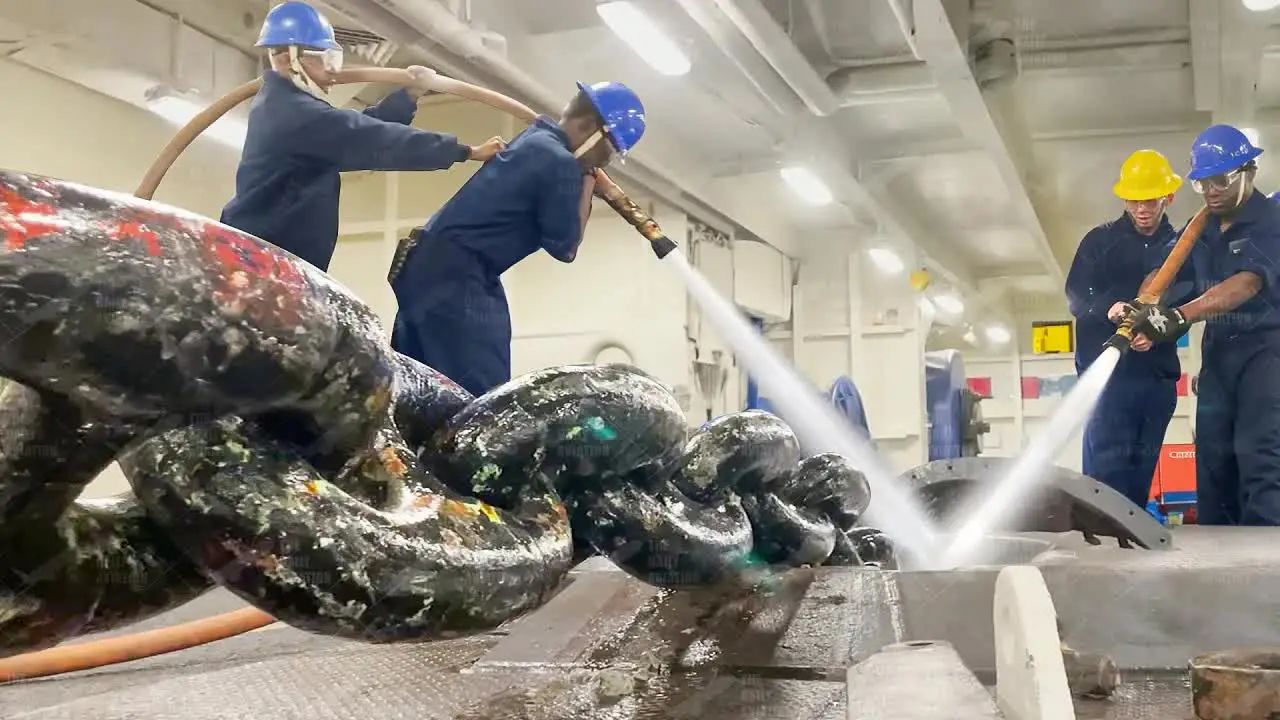Maintenance of The Anchor Chain
2024-11-07
Anchor chains are increasingly utilized on marine vessels. It is essential to learn how to properly maintain anchor chains in order to extend their service life. Only through diligent maintenance can we ensure the normal operation of cranes, ships, and other machinery, thereby achieving safe operations. So, how should one conduct daily maintenance of the anchor chain?
Firstly, it is important to frequently inspect the anchor chains during use to ensure that the capstan is correctly installed on the shaft without any skew or wobble. Any irregularities must be promptly addressed. Regularly check the tension of the anchor chain and make timely adjustments as necessary. The tension should be appropriately calibrated; if it is too tight, power consumption will increase and bearings may wear out; conversely, if it is too loose, there is a risk of the chain jumping off or detaching entirely. If an anchor chain becomes excessively long or elongated after use making adjustment difficult, links may be removed as needed but only in even numbers. The link should pass through the back of the chain with lock plates inserted externally; furthermore, openings in these lock plates should face opposite to the direction of rotation.
Secondly, consistently monitor for signs of wear on the anchor chain. To what extent has wear occurred? If more than one-third of a given set's links exhibit significant elongation or if deformation reaches 10% of its original diameter, then usage must cease immediately. When an anchor chain shows severe wear and tear, both new sprockets and new chains need replacement to ensure proper engagement between components—not merely replacing individual parts alone suffices for effective function. Additionally, it's advisable that both ends—the terminal end and commonly used end—of each cable link are rotated every year or two while re-marking them accordingly for identification purposes.
Lastly, attention must be paid towards maintaining anchors during operational periods: when anchoring do not halt movement abruptly; upon raising anchors always clean them thoroughly by removing debris; typically an active cleaning process needs implementation alongside keeping chains dry at all times—avoid flushing water into storage compartments while cleaning decks! Conduct inspections biannually where all cables laid out on deck undergo rust removal treatments along with painting checks ensuring markings remain clearly visible throughout usage cycles; lubricating oil application must occur regularly during operation so that lubrication penetrates gaps between rollers and inner sleeves enhancing working conditions whilst minimizing overall wear.




